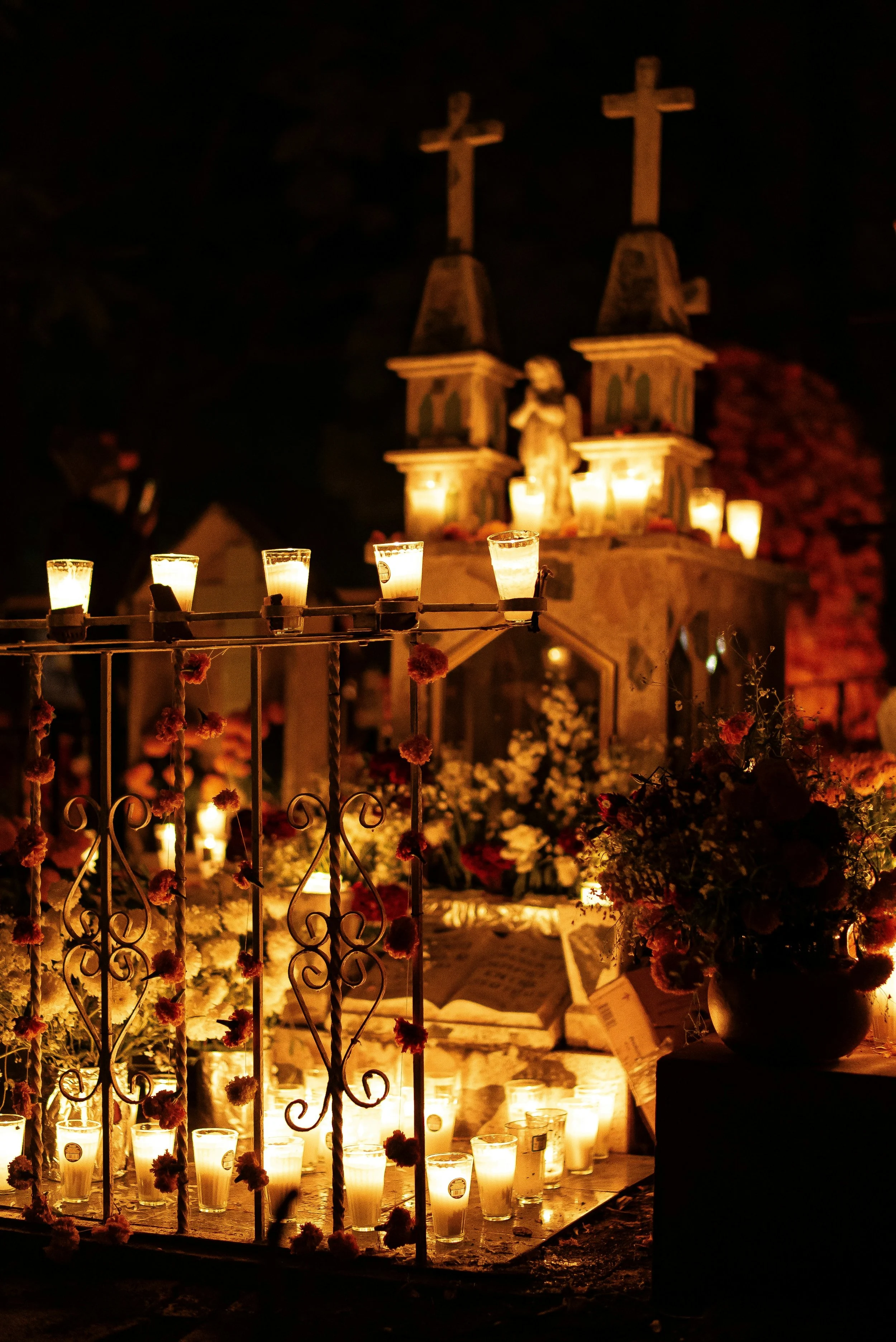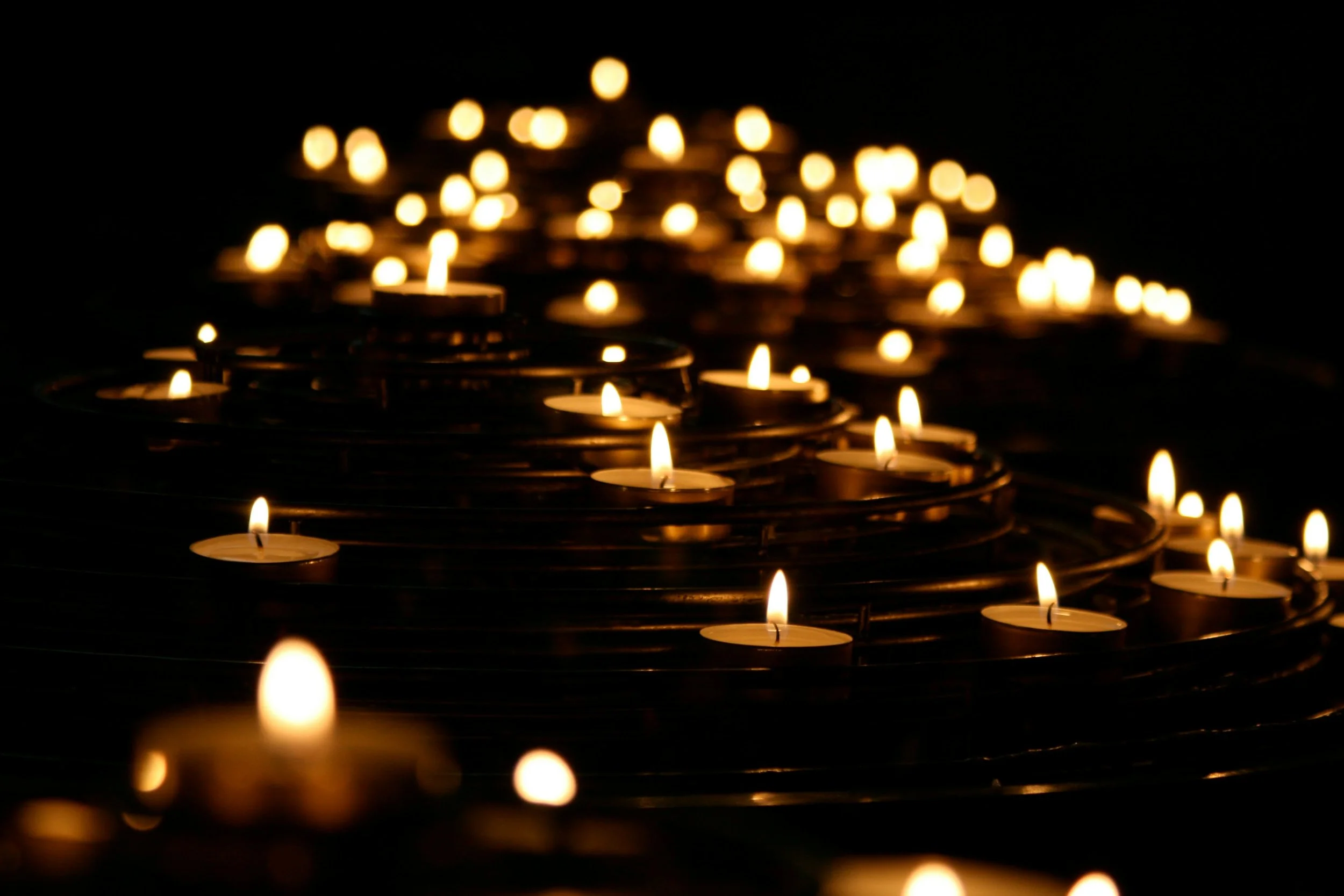The Warm Breath of Hollow’s Exhale
On this holy observance of All Saints' and All Souls' Days, we turn our gaze toward the encounter with the mysterious veil between this life and the next, where memory, hope, and love intertwine in sacred tension.
To the Souls who have tilled Earth’s last embrace and the Saints who have ascended the Holy Parapet: We gather to lift up your memories, honor the heritage of love’s last kiss, and join the unbreakable bond of the love that remains.
The Hollow of Grief
el destino final, Caleb Hernandez Belmonte, Unsplash
Most of us have a story of grief to tell. It’s an inherent part of the human condition, a shared vulnerability that unites us all.
When my wife and I laid our son to rest in 2021, the experience of loss was unlike anything we had ever known. We had walked through sorrow before—the passing of siblings, grandparents, extended family, and dear friends—but the grief of this moment hollowed us in a way that felt entirely new.
Perhaps every experience of grief is entirely new while entirely the same, as the pain of loss is human, but what has been lost is completely unique.
It was an overwhelming sadness, yet, in that very hollow, something else was undeniably present.
On a windy, sunlit day, the silence of the cemetery was met by a warm, sustaining breath—the indescribable comfort of a community that had come not just to mourn, but to celebrate a life and carry forward the love that remains. This grace, shared by those who stood with us, reminded me that our tears are never solitary.
Even Christ, faced with the death of His friend Lazarus, showed us the ultimate solidarity with our human experience: “And Jesus wept.” John 11:35.
Through his tears, he joins us in the hollow of grief and breathed life into it.
The Necessity of Grief
Mike Labrum, Unsplash
Our Catholic Tradition does not ask us to skip over this pain; rather, it elevates and honors it. One of the great theologians and Doctor of the Church, St. Augustine, understood this paradox, observing that:
It is possible for the human heart not to grieve for a dear one who has died; it's better, though, that the human heart should feel grief and be cured of it, than by not feeling any grief to become inhuman.
Grief is the process by which the heart is healed—not by removal or avoidance, but by transformation. It is the sacred space in which the Spirit teaches us to examine the wound, discern its meaning, and eventually forge a deeper capacity for love.
The love we carry forward is the indelible mark on our hearts, visible to the Light of God. It tells us that our every tear is noted, recorded, and purposeful: “My wanderings you have noted; are my tears not stored in your flask, recorded in your book?” Psalm 56:9.
Finding the Cross in the Sorrow
hiking spirit, Jonas Allert, Unsplash
To find the warm breath in the hollow is to align our pain with the Cross—to understand that suffering, far from being meaningless, is precisely where we encounter Christ. This perspective transforms sorrow from a crushing burden into something bearable and, ultimately, fruitful.
St. Mary Magdalen de'Pazzi assures us: "You will be consoled according to the greatness of your sorrow and affliction; the greater the suffering, the greater will be the reward."
The suffering itself is not the reward, or a goal, but can lead to a greater intimacy with Christ. It is an invitation to share in His saving work, just as St. Rita desired: "Let me, my Jesus, share in Thy suffering, at least one of Thy thorns."
Grief is complex, dynamic, and not at all a linear 1, 2, 3, done process. This is the great spiritual secret of enduring loss: when we accept the inevitable reality of grief and allow it to draw us into community and closer to God, the very act of sorrow becomes a source of hope. The difference is radical:
"How unbearable is pain when suffered far from the Cross, but how sweet and bearable it becomes when it is offered close to the Cross of Jesus!" – St. Padre Pio
The deepest sadness only prepares the heart for the deepest consolation. To embrace this truth is to begin the work of allowing the Warm Breath of Hollow's Exhale to heal and sustain us, proving that the love we share here is truly unbreakable and eternal.
The Quomnia Path: From Hollow to Hope
This movement through grief mirrors the Quomnia path—a rhythm of the soul’s transformation:
Examine the source of pain.
Discern the greater truth revealed through it.
Forge hope through the shared struggle.
Abide in the love and grace that remain.
For the Christian heart, the profound promise that undercuts all sorrow is not that we will forget our grief, but that the joy of reunion will forever eclipse it, establishing a joy that is eternal and beyond the reach of any future pain.
So also you have sorrow now, but I will see you again, and your hearts will rejoice, and no one will take your joy from you.
John 16:22




